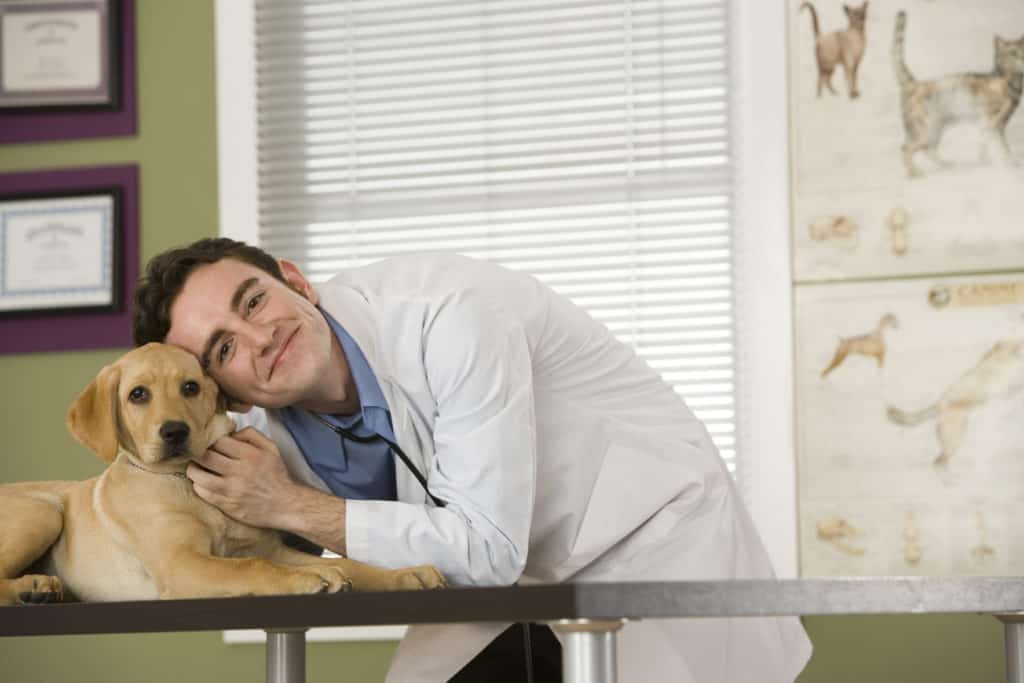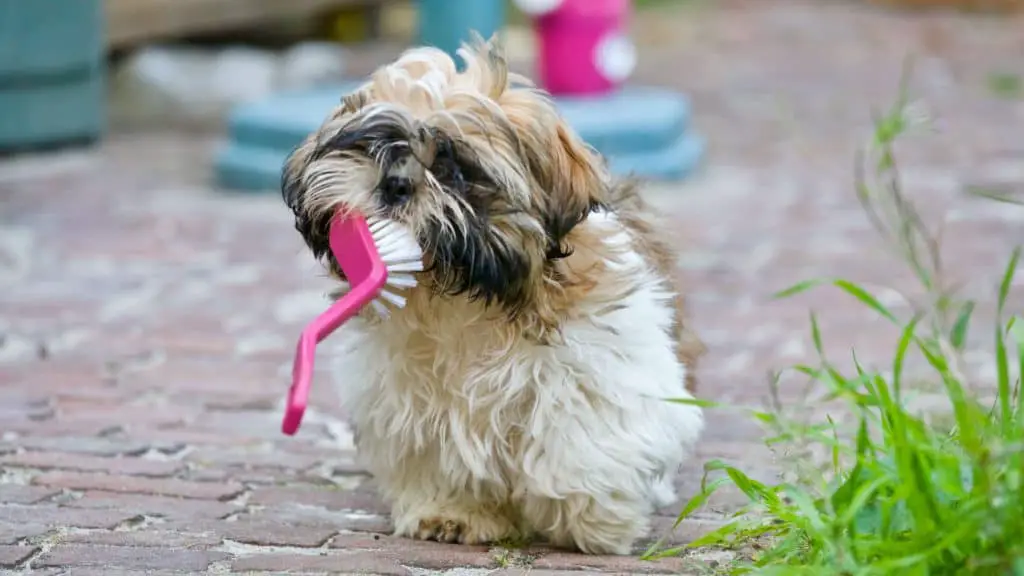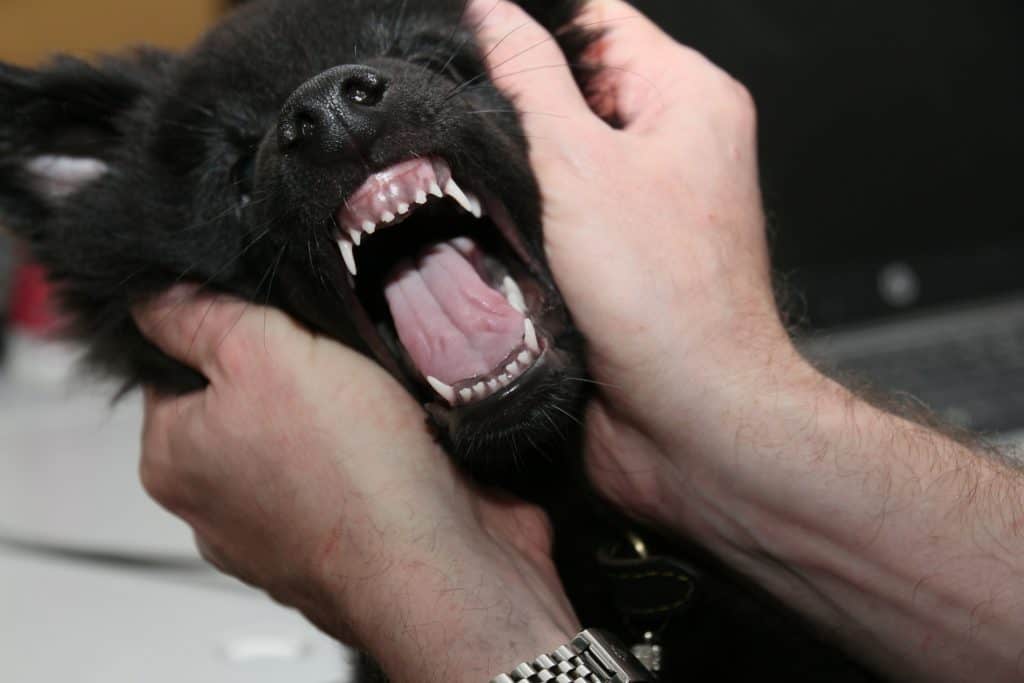If you notice your pet is having any trouble eating or starts to emit bad breath, it’s probably time to consider professional dental cleaning. If that’s the case, you also may be wondering how long is a dog under anesthesia for teeth cleaning.
If you’ve been putting off your pet’s dental care because of anesthetic fears, think about how much happier and healthier your pet will be after the procedure.
Contents
- 1 How Long is a Dog Under Anesthesia for Teeth Cleaning?
- 2 Why Do Dogs Should Be Asleep for Teeth Cleaning?
- 3 How’s Dental Cleaning Without Anesthesia?
- 4 Are There Any Anesthetic Tests Before Dental Cleaning?
- 5 What Are Some Safety Procedures Of Teeth Cleaning With Anesthesia?
- 6 How’s the Recovery and Dental Aftercare?
- 7 Conclusion
How Long is a Dog Under Anesthesia for Teeth Cleaning?
A dog generally is under anesthesia for teeth cleaning for about 60 to 95 minutes. Dental cleanings usually last for 45 to 75 minutes depending on the existing dental condition, number of X-rays, and the amount of tartar in the mouth. After the procedure, the effect of the anesthesia lasts for 15 to 20 minutes.
If there’s a need for tooth extraction, you’ll need to add a little more time. This also depends on the complexity of the case. Don’t worry, even if the procedure means putting your pet under anesthesia for quite some time, the benefits still outweigh a few risks.

Why Do Dogs Should Be Asleep for Teeth Cleaning?
Your dog’s safety is the priority during teeth cleaning. With the help of anesthesia, you can guarantee the following:
Thorough Removal of Tartar and Dental Plaque
A complete dental cleaning includes tartar scaling above and below the gums, evaluation of pocket depth, and polishing. Veterinarians will need to insert dental instruments below the gum line to remove tartar, so this could be very uncomfortable for your dog if there’s no anesthesia.
During general anesthesia, pets will enter an unconscious state, so they are unable to move and won’t feel any pain. The American Animal Hospital Association states that dogs need anesthesia to allow a thorough evaluation of the mouth, clean teeth above and below the gumline, and treat painful dental conditions.
Less Discomfort and Stress for Your Pet
Dogs don’t understand what’s going on. They may feel stressed or scared with the vet prodding in their mouth. With anesthesia, veterinarians can make pets comfortable and finish the procedure without pain.
An awake dog is unlikely to allow a veterinarian to poke around its mouth with dental instruments. If you want to complete the cleaning within the normal timeframe, let your dog undergo an anesthetic procedure.
Successful X-Ray Scans
Since 60% of a tooth is below the gumline, veterinarians will order dental X-rays before every dental cleaning. Anesthesia helps dogs keep still, letting X-ray technicians do the job successfully.
If the Veterinarian doesn’t have an X-ray, they will find it difficult to locate problems such as periodontal disease, root fractures, and retained roots. As a result, they may not be able to diagnose and treat dental problems. That’s why we perform dental X-ray on all our dental procedures.
How’s Dental Cleaning Without Anesthesia?
Anesthesia-free dental cleanings are not enough. Without anesthesia, it will be impossible to take dental X-rays, clean the mouth entirely, and probe the gumline.

Are There Any Anesthetic Tests Before Dental Cleaning?
While anesthesia isn’t completely risk-free, complications are extremely rare since Care Animal Hospital conducts pre-anesthetic screening before a dental cleaning.
The screening covers physical examination and bloodwork to identify if there are organ problems. It’s essential that the kidney and liver function properly, so there will be no complications with anesthesia.
With proper evaluation, the veterinarian can determine the safest anesthetic and pain management plan for your dog.
What Are Some Safety Procedures Of Teeth Cleaning With Anesthesia?
In every part of the teeth cleaning procedure, anesthesia aids the veterinary team to provide the best care for your dog.
Anesthesia Monitoring
After giving anesthesia, we will put an endotracheal or breathing tube in your pet for airway protection, ensuring your dog’s blood remains oxygenated.
Anesthetic medications slow down the heart and lungs; this is why a veterinary team will closely monitor your pet to guarantee ample cardiovascular and respiratory function. From the moment your dog gets anesthesia, the team will check your pet’s vital signs:
- Heart rate and rhythm
- Heart electrical activity
- Core body temperature
- Blood flow
- Blood pressure
- Blood oxygen levels
- Respiratory rate and depth
- Anesthetic depth
Based on your dog’s vital signs, a veterinary assistant or technician will help the vet adjust the anesthetic levels.
Tartar and Plaque Removal
While your dog is under anesthesia, the veterinarian will take out tartar from the teeth. The vet will also remove plaque from the teeth and under the gumline.

With the aid of the X-ray results, the vet will then evaluate for developmental pockets, infection, or other signs of disease. If necessary, the veterinarian will perform a tooth extraction, periodontal surgery, or periodontal therapy.
Polishing
If your pet remains unconscious the whole time, it will be easier for the vet to polish and treat your dog’s teeth with fluoride. This step is essential because it aids in reducing and slowing down the buildup of tartar and plaque in the future.
Documentation
Finally, the vet will document the condition of your dog’s mouth. You will receive a record showing which teeth are missing or extracted, as well as vital information on general oral health. It’s important to keep a copy of it so that you can track your pet’s health progress.
How’s the Recovery and Dental Aftercare?
Most dogs recover from anesthesia 15 to 20 minutes after a dental cleaning. Let them rest for a few minutes before heading home. Depending on the dog’s condition, the vet may prescribe antibiotics or pain medications.
After that, it’s your responsibility to care for your pet’s oral health once again. To help your dog maintain good oral hygiene, here are some steps you can take:
- Even if there’s no tooth extraction, your pet may have a sore mouth for the next two to three days. Remember, the gumline underwent a thorough cleaning process.
- If the cleaning had to include extractions, you might notice a small amount of bleeding whenever your dog drinks water.
- Your pet may still be a little sleepy for the rest of the day.
- Feed your dog about half of its typical consumption. The next day, your pet should be able to eat a regular amount of food.
- Brush your pet’s teeth twice a day. Do not use toothpaste for humans. Use only pet toothpaste that is non-foaming and safe to swallow.
Conclusion
During a dental cleaning, our team of experts will take care of your dog. The veterinarian, technician, and assistant will ensure your pet is in good hands. Your pet will be under anesthesia for about an hour, and after that, your dog will have better oral hygiene. You can call to schedule a dental exam by calling (951)676-4690.
